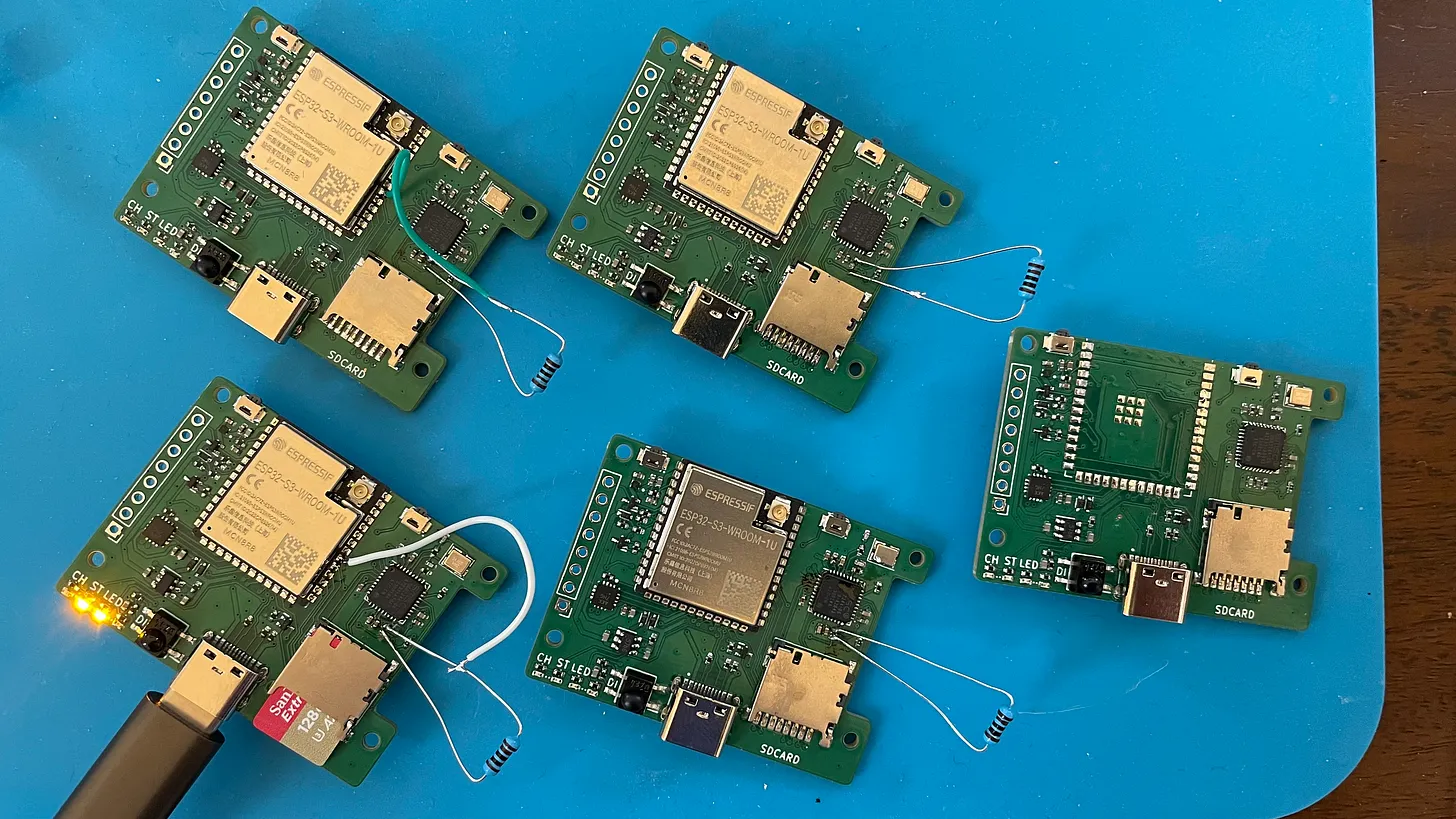The new PCBs arrived for the ESP32-TV project and, as you can see from the video, they look great. Only one bodge resistor was needed to get them working!

The ESP32 and USB2244 are both setup to share the same USB connection and SD Card. To make this work I’m holding the USB2244 in reset mode whcih should make all it’s pins go into a high impedence state.
In my original schematic I was doing this using a 100K pull down resistor, but there’s a sneaky hidden pull up resistor on the pull up pin that’s not documented anywhere.
This means that both the ESP32 and the USB2244 are both active and both trying to use the USB connection - not what we wanted at all!
Alls well that ends well though, it’s a pretty easy fix.
But there’s a more catastrophic error on the PCB. Have a look at this part of the schematic and see if you can spot the problem:

Watch the video so see if you were correct :)